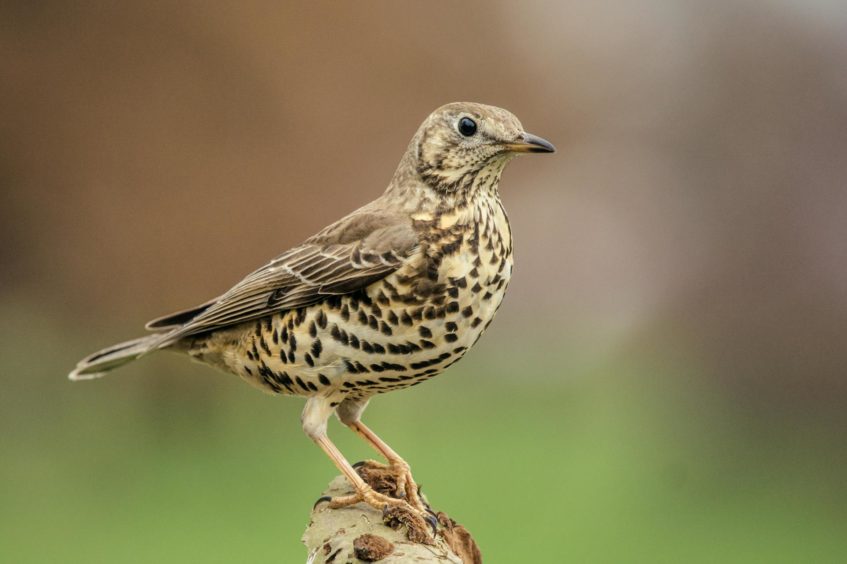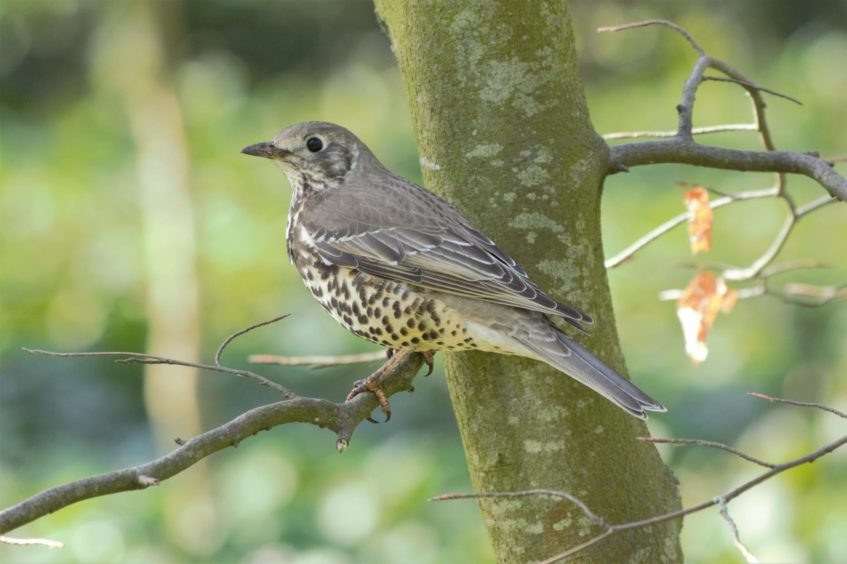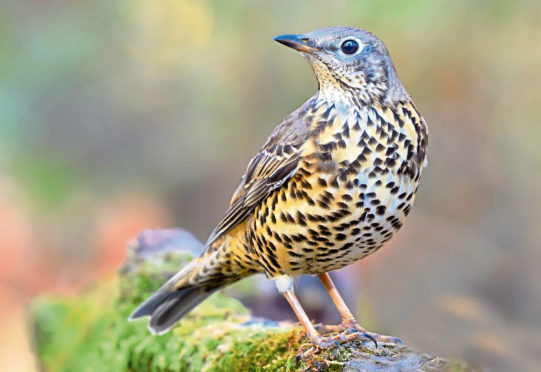A bold yet lilting song drifts across the winter-laden air by this shelterbelt on the edge of the Ochils. At first, I think it is blackbird, but no, the song is different and more hesitant in its delivery.
There it goes again, one melancholy phrase, followed by a pause, before moving onto the next phrase. I scan the trees with my binoculars, and up high, perched on the very top of a sycamore, I eventually spot the source of this sweet music – a mistle thrush.
He sang for a while longer, before swooping down from his lofty perch to alight on a fence post, the distinctive pale margins of his tail catching the frost-sparkled sunlight. The thrush sat there for a short period, before taking to the air once more in an undulating flight and disappearing from view.

In February, even when the wind is blowing, and every other bird has hunkered down, mistle thrushes have this endearing habit of spilling forth their rich songs from the tops of trees. Indeed, the bird is even known as the ‘storm cock’ because of its penchant to sing when the weather is inclement. Thomas Coward, the early 20th century ornithologist, wrote: “…when the weather is broken, the bird perches high on a tall tree and in exultant and ringing song defies the elements”.
Seeing this mistle thrush made me ponder, reflecting how one doesn’t miss the presence of a particular bird or animal, until you actually see one, which in turn acts as a forceful reminder of its scarcity. When was the last time I had seen a mistle thrush? It was hard to be certain, but it was more than a month or so, perhaps even longer.
Even as recently as 10 years ago, I am certain that mistle thrushes were more frequent than they are now. Is this decline real, or is it just a perception in my mind and more a reflection of their scarcity in my home area, rather than a nationwide fall in numbers? I hope it is the former, but suspect it is the latter.

Nowadays, I am most likely to see mistle thrushes in the Angus or Perthshire glens, where they find to their liking the mix of rough pasture for feeding and scattered trees and plantations for nesting. Here, they often congregate in flocks in late summer and early autumn.
If mistle thrushes really have declined, I wonder if the reason is down to increased predation of eggs and young during the breeding season. Mistle thrush nests are bulky and conspicuous, making them an easy target for marauding crows and other avian predators.
Whatever the case, over the coming weeks as spring’s embrace becomes ever stronger, I will continue to listen out for my local storm cock, revelling in the beauty of his rich fluty tones resonating across the green folds and tucks of the Ochils.
Info
Mistle thrushes are larger than song thrushes. The upperparts are brownish grey, and they have a more upright stance than song thrushes, with the spots on the breast being bolder.










